Lanzarote is a volcanic island located off the coast of Africa in the Atlantic Ocean. While it may be best known for its stunning landscapes and unique geology, the island is also home to a diverse bird population.
From rare and endangered species to common garden birds, Lanzarote offers bird enthusiasts a chance to witness a variety of different species up close.
Whether you’re a professional ornithologist or simply a nature lover, Lanzarote’s feathered inhabitants are sure to capture your imagination and make your visit to the island truly unforgettable.
In this article, we will take a closer look at the different types of birds that can be found in Lanzarote, their habitats, and their behaviors.
1. Houbara Bustard
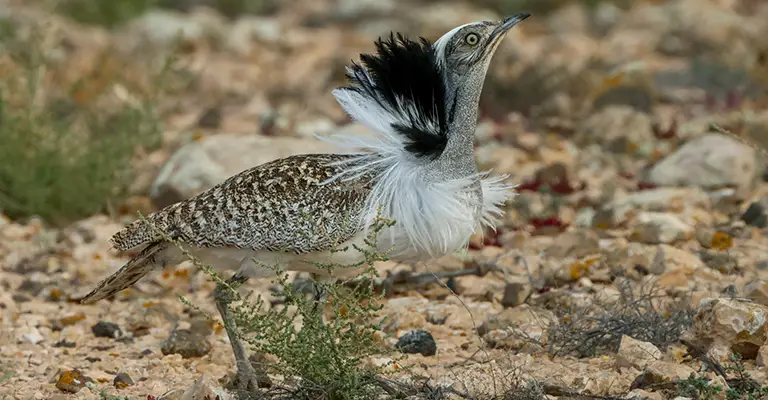
The Houbara Bustard is a small bird native to North Africa. It has dull brown feathers with black markings on the wings, and a grey crown of feathers atop its head.
This species inhabits arid habitats, making it particularly vulnerable in this environment due to lack of resources available.
The global population is listed as Vulnerable by IUCN Red List and there is also a population in the Canary Islands which has been assessed as Near Threatened.
Conservation efforts have been put into place but more needs to be done if we are going to protect these birds from endangerment or extinction.
We must ensure that their habitat remains protected so they can thrive in safety for generations to come.
Scientific classification:
| Kingdom | Animalia |
| Phylum | Chordata |
| Class | Aves |
| Order | Otidiformes |
| Family | Otididae |
| Genus | Chlamydotis |
| Species | C. undulata |
Also Featured In: Native Pakistani Birds, Birds Live in Tunisia
2. Laughing Dove
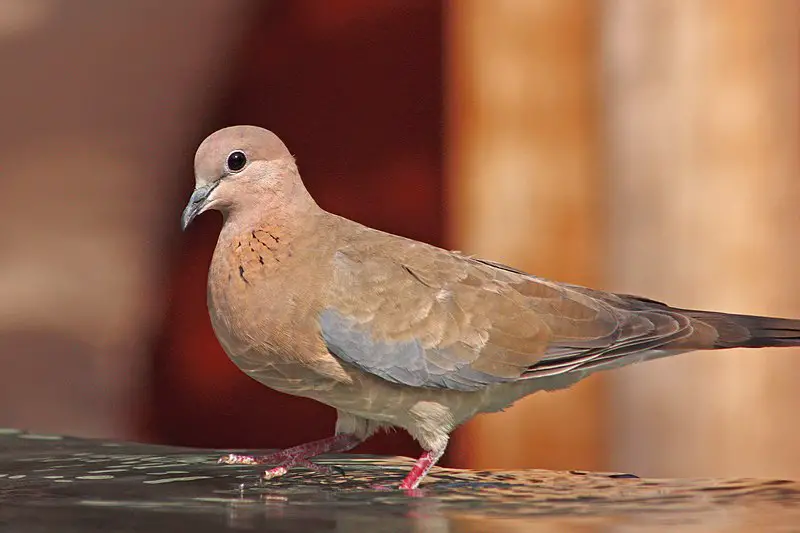
The Laughing Dove is a small and long-tailed pigeon found in dry, scrubby or semi-desert habitats. These birds are native to Africa, the Middle East, South Asia and Western Australia where they were released from Perth Zoo in 1898.
A unique feature of these doves is their call which sounds like low laughter – hence its name.
They form pairs when feeding on the ground, often near water sources such as pools or riverbanks. The diet of this bird consists mainly of seeds with some invertebrates also taking up part of it.
This species has adapted well to different environments due to its ability to find food resources easily even during times when other foods may be scarce.
Scientific classification:
| Kingdom | Animalia |
| Phylum | Chordata |
| Class | Aves |
| Order | Columbiformes |
| Family | Columbidae |
| Genus | Spilopelia |
| Species | S. senegalensis |
Also Featured In: Egyptian Birds, Most Common Western Australia Birds
3. Cream-Colored Courser
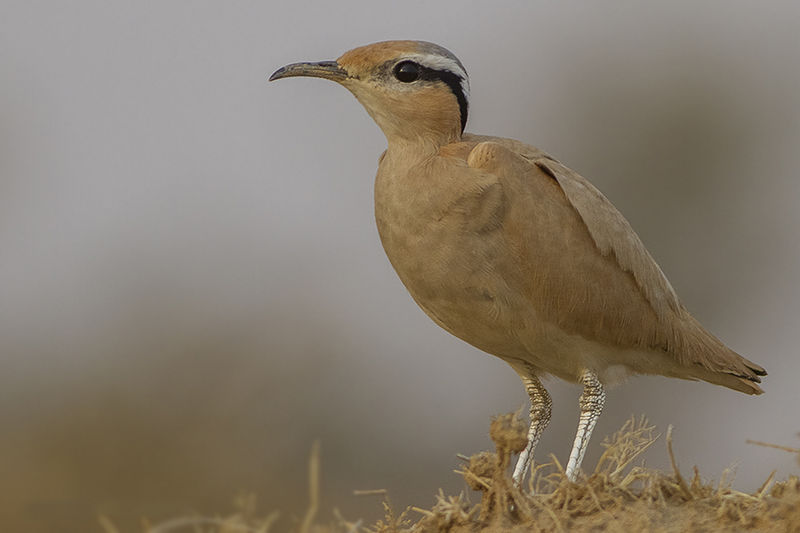
The Cream-colored Courser is a species of wader belonging to the Glareolidae family. It can be found across Western Asia and North Africa and inhabits dry, open semi-desert habitats.
These birds have adapted well to their environment; they are able to run quickly in search of insect prey on the ground which explains their scientific name Cursorius cursor – derived from Latin for ‘runner’.
The coursers also inhabit the Canary Islands as well as Cape Verde where breeding occurs during summer months before migration back south begins in autumn and winter months.
They are easily identified by their distinctive cream coloration with brown streaking along wings, neck and chest region making them an important part of these arid ecosystems.
Scientific classification:
| Kingdom | Animalia |
| Phylum | Chordata |
| Class | Aves |
| Order | Charadriiformes |
| Family | Glareolidae |
| Genus | Cursorius |
| Species | C. cursor |
Also Featured In: Turkey Birds You Should Know, Birds That Live in Iraq
4. Eurasian Stone-Curlew
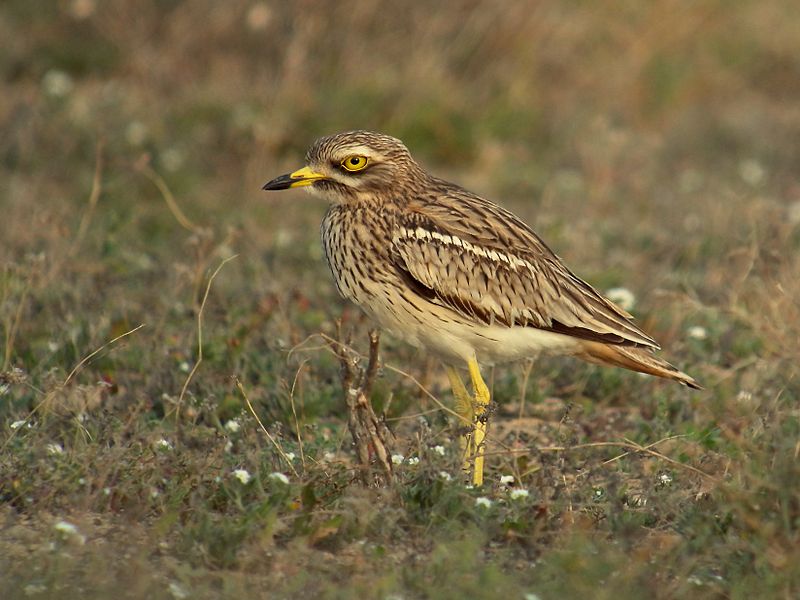
The Eurasian stone-curlew, also known as the Eurasian thick-knee, is a species of bird from the Burhinidae family. It was first described by Swedish naturalist Carl Linnaeus in 1758 and is mainly found in England.
These birds have brown feathers with black markings on their wings and head; they also possess long beaks for catching prey.
They usually feed on insects, small rodents, worms and other invertebrates that can be found near water sources or open areas such as fields and meadows.
Stone curlews are mostly active during night time but can occasionally be seen during day light hours too.
During breeding season these birds make loud calls to attract mates and ward off predators while defending their nests which are often built in grassy plains or dry moorside land away from human activity or disturbance.
Scientific classification:
| Kingdom | Animalia |
| Phylum | Chordata |
| Class | Aves |
| Order | Charadriiformes |
| Family | Burhinidae |
| Genus | Burhinus |
| Species | B. oedicnemus |
Also Featured In: Belarus Birds You Should Know, Birds You’ll Find in Night
5. Whiskered Tern
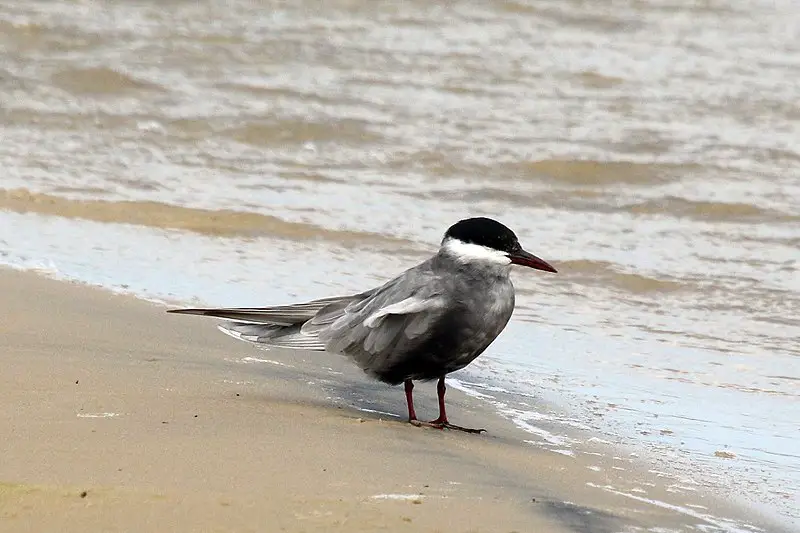
The whiskered tern (Chlidonias hybrida) is a small, graceful bird belonging to the family Laridae, which includes gulls, terns, and skimmers.
This bird is widely distributed across Europe, Asia, and Africa, where it breeds in colonies in freshwater marshes, ponds, and lakeshores.
The whiskered tern has a distinctive appearance, resembling a swallow, with a short, forked tail, black cap, and white cheeks.
One of the most distinctive features of the whiskered tern is its bill, which is strong and pointed. This adaptation allows it to catch insects and small fish, which make up the bulk of its diet.
During the breeding season, the whiskered tern’s bill and legs turn bright red, adding to its striking appearance.
The whiskered tern is a highly adaptable bird, and as such, it is found in various races across its range. For example, in Europe, it breeds mainly in western and southern countries, while in Asia, it breeds from the Middle East to the Russian Far East.
The whiskered tern is also a migrant bird, with populations wintering in sub-Saharan Africa, India, Southeast Asia, and Australia.
Breeding season for the whiskered tern is between May and August, and the birds form colonies with hundreds or thousands of individuals. They build their nests on floating vegetation or on the ground, and both sexes share incubation duties.
The chicks hatch after about three weeks, and the parents feed them insects and small fish until they are ready to fly after about three more weeks.
Although the whiskered tern is not considered threatened, its populations have declined in some areas, primarily due to habitat loss and degradation.
The destruction of wetlands, pollution, and changes in water levels and quality have all had an impact on the bird’s breeding and feeding grounds.
Scientific classification:
| Kingdom | Animalia |
| Phylum | Chordata |
| Class | Aves |
| Order | Charadriiformes |
| Family | Laridae |
| Genus | Chlidonias |
| Species | C. hybrida |
Also Featured In: Most common Birds in France, Common Serbian Birds
6. Barbary Partridge
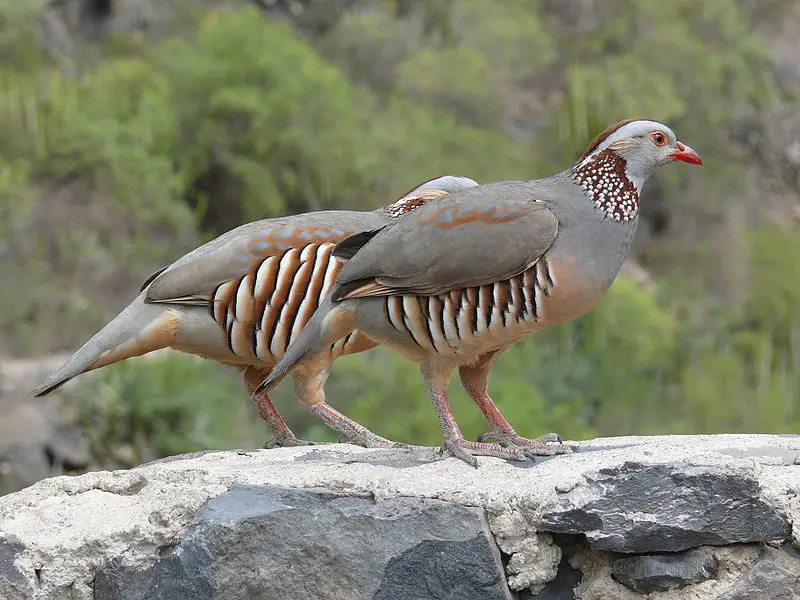
The Barbary partridge is a gamebird in the pheasant family, native to North Africa and surrounding regions such as Gibraltar and the Canary Islands.
It has been introduced to Portugal and Madeira with no recent reports of successful breeding populations outside its original range.
This species prefers open areas such as plains or scrubland, where it feeds on seeds, fruits, insects and small vertebrates like lizards. The males are larger than females with white spots on their chestnut-brown plumage.
Habitat loss due to overgrazing by livestock coupled with hunting pressure have caused declines in population numbers across much of their range making them vulnerable to local extinction if these threats continue unchecked.
Conservation measures are needed for this beautiful bird’s long-term survival.
Scientific classification:
| Kingdom | Animalia |
| Phylum | Chordata |
| Class | Aves |
| Order | Galliformes |
| Family | Phasianidae |
| Genus | Alectoris |
| Species | A. barbara |
Also Featured In: Birds of Morocco, Most Common Birds of Sardinia
7. Eleonora’s Falcon
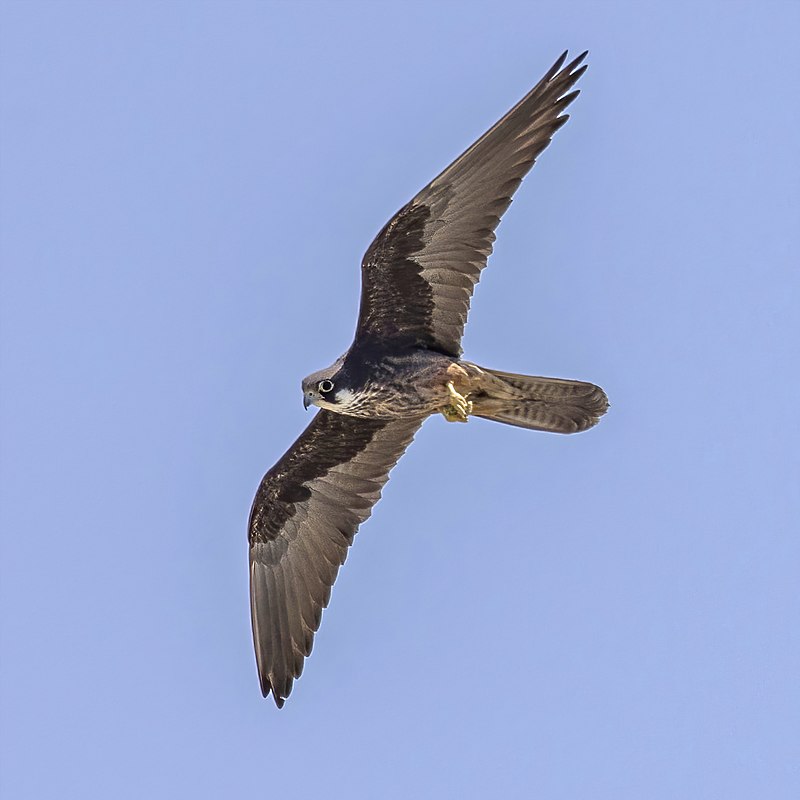
Eleonora’s falcon is a medium-sized bird of prey that belongs to the hobby group of similar species. It has distinct features such as its light brown back, white belly and dark eye stripe.
This stunning creature can be found in parts of Europe, North Africa and Asia Minor where it feeds mainly on lizards, large insects and small birds.
Its conservation status is currently stable due to successful breeding programs across many countries which have helped prevent any further declines in population size.
Eleonora’s Falcon also plays an important role in maintaining balance within ecosystems by controlling pest populations like mice or locusts.
All these attributes make this beautiful raptor a truly remarkable animal worthy of admiration.
Scientific classification:
| Kingdom | Animalia |
| Phylum | Chordata |
| Class | Aves |
| Order | Falconiformes |
| Family | Falconidae |
| Genus | Falco |
| Species | F. eleonorae |
Also Featured In: Birds of Madagascar, Birds that Live in Croatia
8. Great Grey Shrike
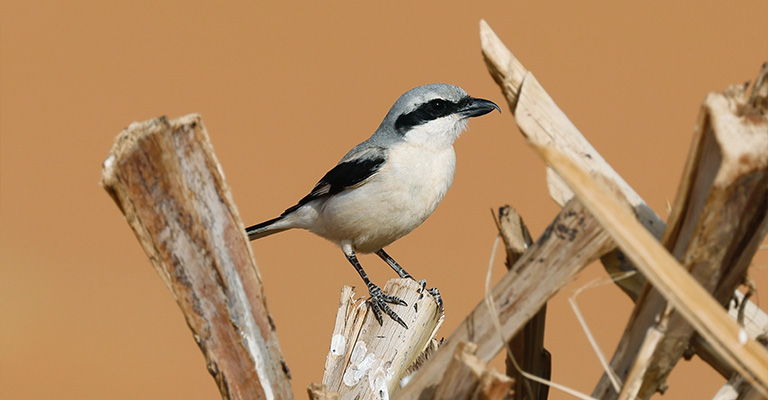
The Great Grey Shrike is a predatory songbird of the shrike family. It has a pearly grey plumage and striking black eye-mask, making it an attractive species to watch.
Males and females are alike in their plumage, however males have larger heads and longer tails than those of the female birds. This bird can be found across Europe, Asia, North America, Canada and Alaska.
They prefer open habitats such as grasslands or scrubby areas where they can hunt for small mammals like mice or voles from exposed perches on tree branches or hedgerows – this behaviour gives them their nickname of ‘Butcher Bird’.
The population numbers for these birds remain stable but there is some concern about habitat loss due to agricultural intensification which could potentially lead to decreased populations in future years.
Scientific classification:
| Kingdom | Animalia |
| Phylum | Chordata |
| Class | Aves |
| Order | Passeriformes |
| Family | Laniidae |
| Genus | Lanius |
| Species | L. excubitor |
Also Featured In: Best Birds Watching in Austria, Autumn Birds You Should Know
9. European Storm Petrel
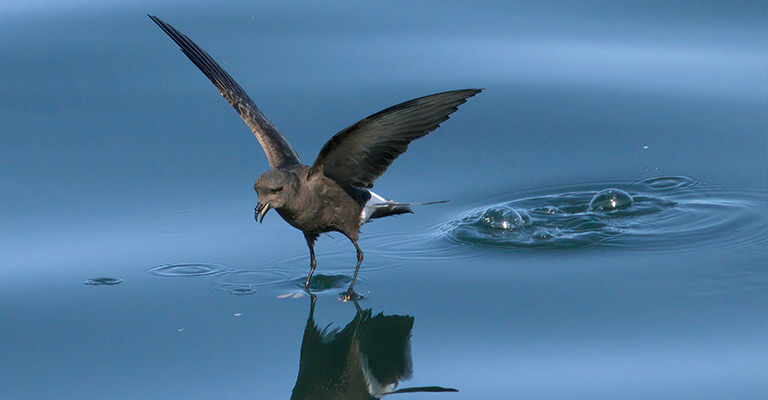
The European Storm Petrel is a small black seabird with a white rump and wings. It has an unusual, bat-like flight which flutters across the sky.
Its population mainly breeds on islands off the coasts of Europe, but can also be found in parts of North America as well as Japan and Korea.
They feed on planktonic crustaceans such as copepods by ‘pattering’ over water surface or dip-feeding where they plunge into the sea to catch their prey before flying away again.
These birds are elusive yet social when breeding; during this time they form colonies often near cliffs for protection from predators and harsh conditions at sea.
Scientific classification:
| Kingdom | Animalia |
| Phylum | Chordata |
| Class | Aves |
| Order | Procellariiformes |
| Family | Hydrobatidae |
| Genus | Hydrobates |
| Species | H. pelagicus |
Also Featured In: Ireland Birds, Italian Birds You Should Know
10. Spanish Sparrow
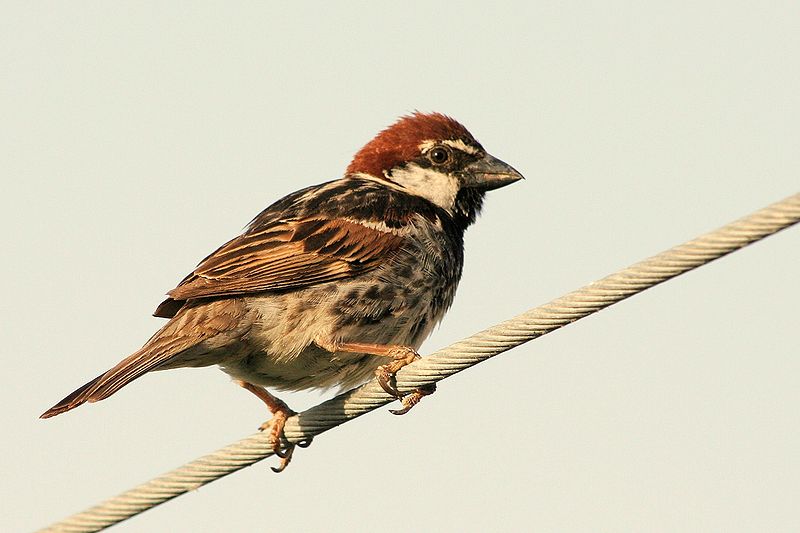
The Spanish sparrow or willow sparrow (Passer hispaniolensis) is a beautiful member of the passerine bird family Passeridae, found mainly in the Mediterranean region and south-west and central Asia.
With its striking colouration – having chestnut brown upperparts with black streaks on its back and wings, white underparts with greyish sidesand a distinctive black line running down either side of its head – it can easily be distinguished from other species.
It shares many physical characteristics with the closely related house sparrow but has some subtle differences such as being slightly smaller in size.
In addition to being an attractive species, they are also very sociable birds often nesting together in colonies making them easy to observe by birdwatchers alike.
Unfortunately hybridisation between these two species complicates their taxonomy which needs further research for clarification.
Scientific classification:
| Kingdom | Animalia |
| Phylum | Chordata |
| Class | Aves |
| Order | Passeriformes |
| Family | Passeridae |
| Genus | Passer |
| Species | P. hispaniolensis |
Also Featured In: Bahrain birds,
11. White-Faced Storm Petrel
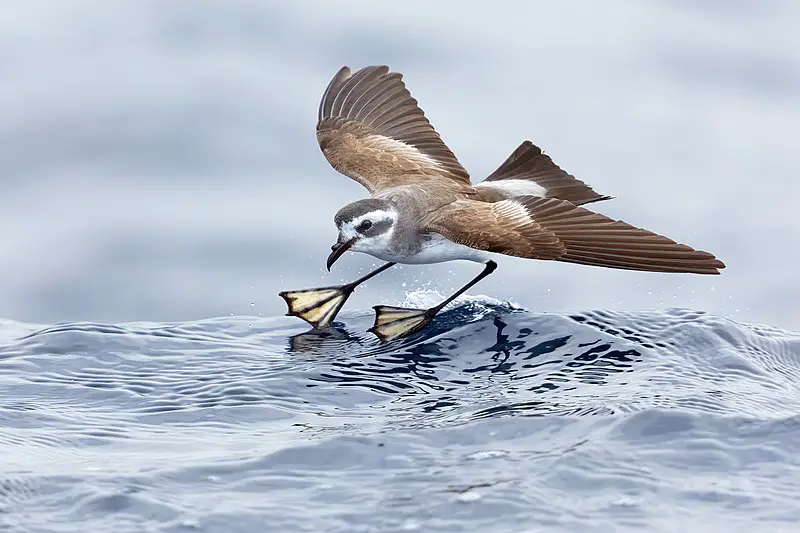
The White-faced Storm Petrel is a remarkable seabird belonging to the austral storm petrel family. It has a length of 19 to 21 centimetres and wingspan that ranges from 41 to 44 cm.
Its body is pale brown or grey, with blackish primaries in its wings and tail feathers.
The most distinctive feature is its white face which gives it an unmistakable appearance among other birds species.
These small, pelagic bird breed mainly on islands off New Zealand and Australia as well as Chile, Argentina, South Georgia and Tristan da Cunha Islands during summer season when they build their nests under rocks or burrows for laying eggs .
They feed by swimming underwater with their feet while searching for food like squid or fish near the surface of water.
In winter these birds migrate southwards where they spend time away from breeding grounds in order to survive cold weather conditions at higher latitudes.
Scientific classification:
| Kingdom | Animalia |
| Phylum | Chordata |
| Class | Aves |
| Order | Procellariiformes |
| Family | Oceanitidae |
| Genus | Pelagodroma Reichenbach, 1853[2] |
| Species | P. marina |
Also Featured In: Cabo Verde birds, Most Common Birds in Stewart Island
12. Scopoli’s Shearwater
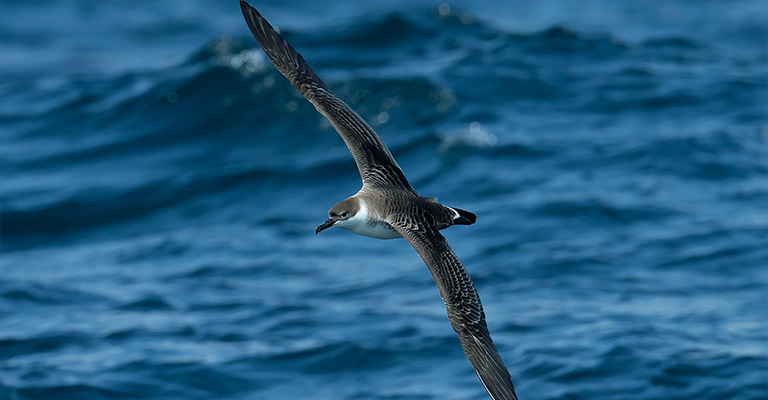
Scopoli’s shearwater is a seabird in the petrel family Procellariidae which breeds on rocky islands and steep coasts in the Mediterranean.
It has brownish grey feathers above, with darker wings and mostly white below.
Its bill is pale yellow with a dark patch near its tip, making it easily distinguishable from other birds of its kind.
The sexes are similarly coloured and were previously thought to be identical species until further inspection revealed otherwise.
During breeding season it stays close to shore but during migratory periods can often be seen searching for food far out at sea where they use their long slender bodies to glide over waves effortlessly as if flying through air.
Scientific classification:
| Kingdom | Animalia |
| Phylum | Chordata |
| Class | Aves |
| Order | Procellariiformes |
| Family | Procellariidae |
| Genus | Calonectris |
| Species | C. diomedea |
Also Featured In: Malta birds,
13. Barbary Falcon
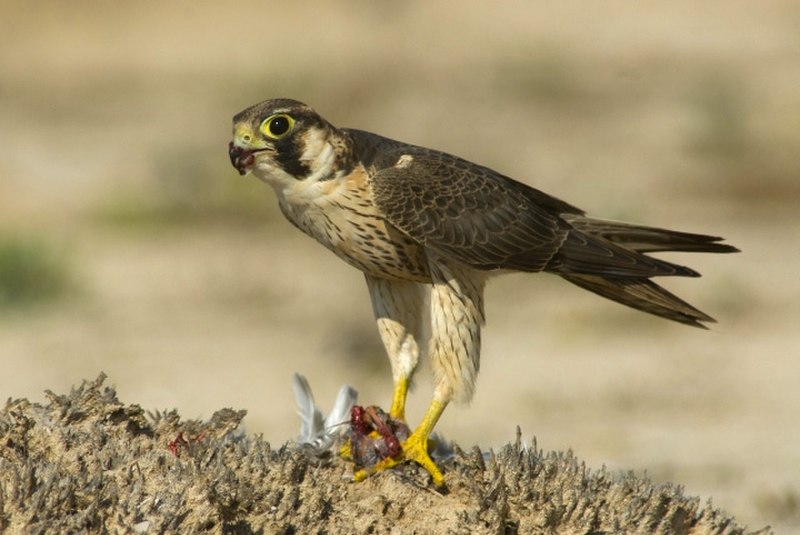
The Barbary falcon (Falco peregrinus pelegrinoides) is a medium-sized bird of prey typically found in semi-desert and dry open hills.
This agile hunter has the size of a crow, with an impressive wingspan that enables it to soar through the skies with great speed.
It mainly resides in areas ranging from the Canary Islands eastwards across North Africa, Middle East and Central Asia, usually nesting on cliff ledges or other high places.
Its diet consists mostly of small birds like pigeons or doves; however they also feed on small mammals such as bats and rodents too.
With its remarkable flying abilities and hunting prowess this majestic species continues to captivate people throughout its range making it an iconic symbol for many cultures over centuries now.
Scientific classification:
| Kingdom | Animalia |
| Phylum | Chordata |
| Class | Aves |
| Order | Falconiformes |
| Family | Falconidae |
| Genus | Falco |
| Species | F. peregrinus |
| Subspecies | F. p. pelegrinoides |
Also Featured In: Falcons Species, Fuerteventura Island Birds You Need to See
14. Yellow-Legged Gull
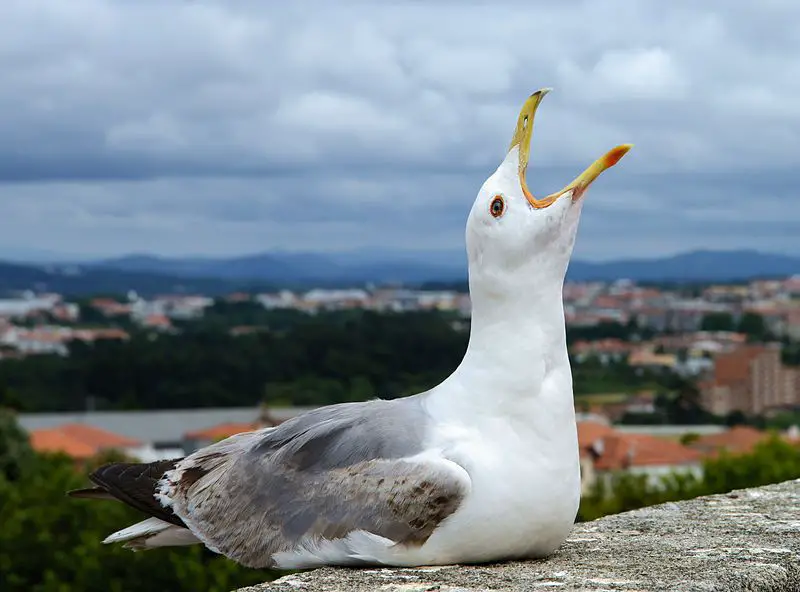
The Yellow-legged Gull is a large bird found mainly in Europe, the Middle East and North Africa.
It was previously considered to be either a subspecies of the Caspian gull or Herring Gull but has recently been identified as its own species.
The name Larus comes from Latin and likely refers to seabirds in general.
This species has yellow legs, white head with dark eyespots on each side, gray wings with black tips and pinkish legs.
They have curved bills that are yellow at the base which turn red near the tip during breeding season.
These birds feed mainly on fish but also scavenge for food when necessary such as insects, crustaceans etc.. The Yellow-legged Gull can often be seen along coastlines soaring high above fishing boats searching for their next meal.
Scientific classification:
| Kingdom | Animalia |
| Phylum | Chordata |
| Class | Aves |
| Order | Charadriiformes |
| Family | Laridae |
| Genus | Larus |
| Species | L. michahellis |
Also Featured In: Gulls Species, Flight Birds You Should Know
15. Berthelot’s Pipit
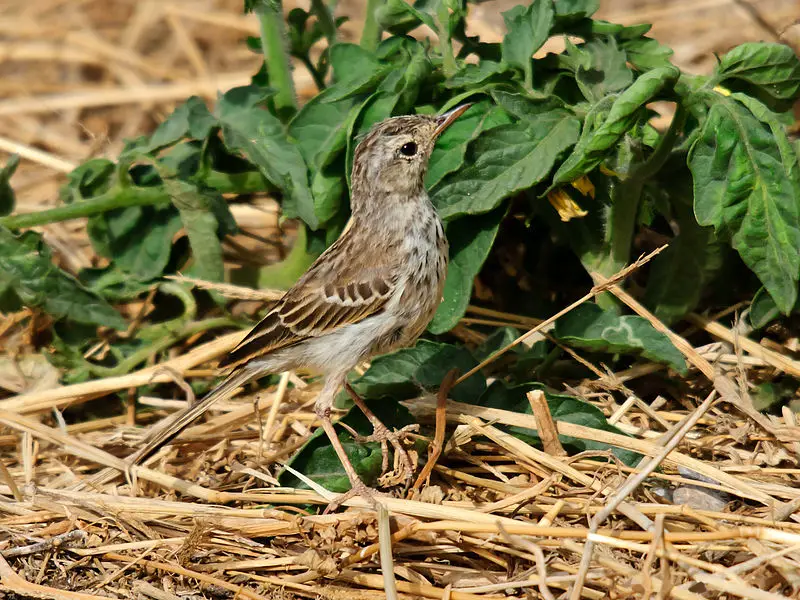
Berthelot’s pipit is a small bird that can be found in the Canary Islands and Madeira. It prefers open areas for nesting and lays 3-5 eggs on the ground.
The bird is mainly gray above, and it’s an inconspicuous-looking species on the ground. It’s a common resident in both archipelagos, and it’s about 13-14 centimeters long.
Known as a pipit, it belongs to the passerine family. Despite looking unremarkable, it’s considered a beautiful bird and is highly appreciated by birdwatchers for its delicate features, simple melodies, and unassuming nature.
Berthelot’s pipit is a species that is well-loved across the Canary Islands and Madeira.
Scientific classification:
| Kingdom | Animalia |
| Phylum | Chordata |
| Class | Aves |
| Order | Passeriformes |
| Family | Motacillidae |
| Genus | Anthus |
| Species | A. berthelotii |
Also Featured In: Birds of Gran Canaria Island,
16. Cory’s Shearwater
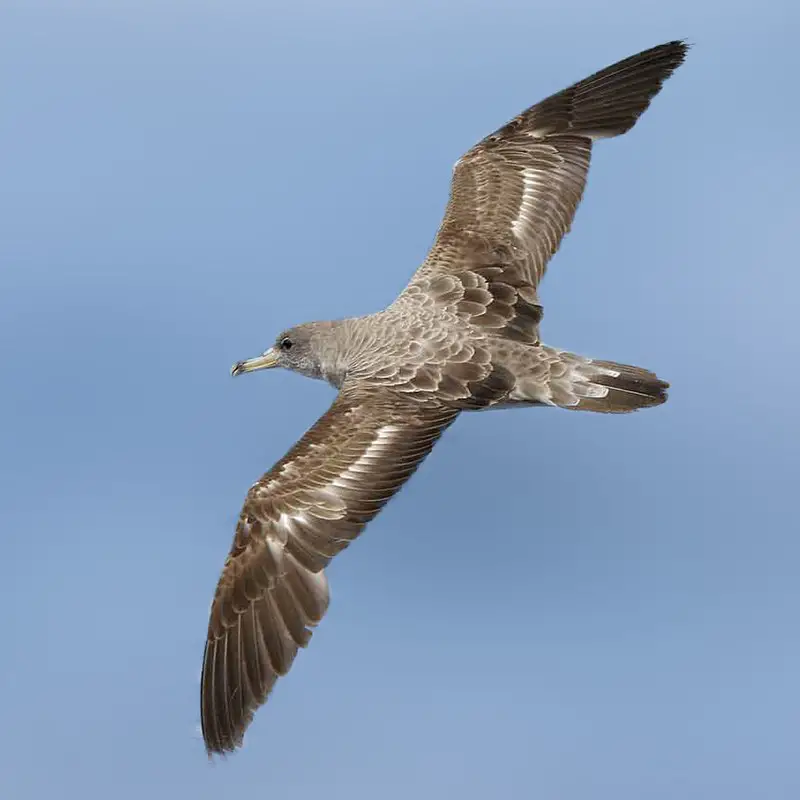
The Cory’s shearwater is a seabird from the Procellariidae family that lives in the eastern Atlantic. It breeds in colonies in rocky islands and has a wide range during the non-breeding season.
The bird was described by Charles B. Cory in 1881 and is larger in size compared to other shearwaters. It was previously classified as Scopoli’s shearwater but was later recognized as a distinct species.
Known for its long, slender wings, the Cory’s shearwater is adapted for long-distance flight and can cover great distances while foraging for food.
The bird’s plumage is mostly brown and gray with a white belly, and it has a sharply pointed beak that aids in catching prey.
The Cory’s shearwater is an important part of marine ecosystems and helps to control populations of fish and squid.
Scientific classification:
| Kingdom | Animalia |
| Phylum | Chordata |
| Class | Aves |
| Order | Procellariiformes |
| Family | Procellariidae |
| Genus | Calonectris |
| Species | C. borealis |
Also Featured In: Birds that Live in the Ocean , Most Common Birds of San Miguel Island
17. Trumpeter Finch
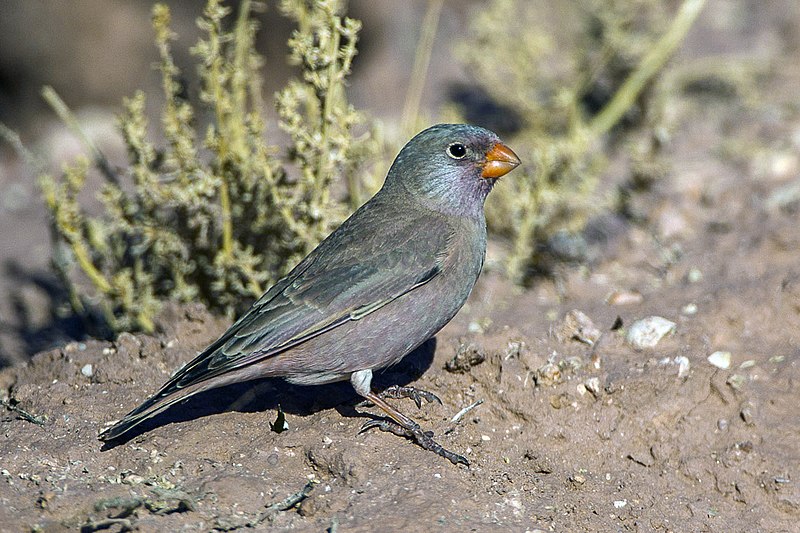
The Trumpeter Finch, also known as Bucanetes githagineus, is a small bird that belongs to the finch family Fringillidae.
This bird species is commonly found in regions with a desert climate such as North Africa, Spain, and southern Asia, and they can be spotted as vagrants in areas outside their breeding range.
The bird is mainly brown and white in color, and it has a unique call that sounds like a trumpet, hence the name.
The Trumpeter Finch can breed from the Canary Islands going eastward across North Africa, and it can be spotted in countries such as Mauritania, Mali, and Chad.
These birds are adapted to dry climates and can be seen perched on rocky outcrops, feeding on seeds and insects.
Scientific classification:
| Kingdom | Animalia |
| Phylum | Chordata |
| Class | Aves |
| Order | Passeriformes |
| Family | Fringillidae |
| Subfamily | Carduelinae |
| Genus | Bucanetes |
| Species | B. githagineus |
18. Iberian Grey Shrike
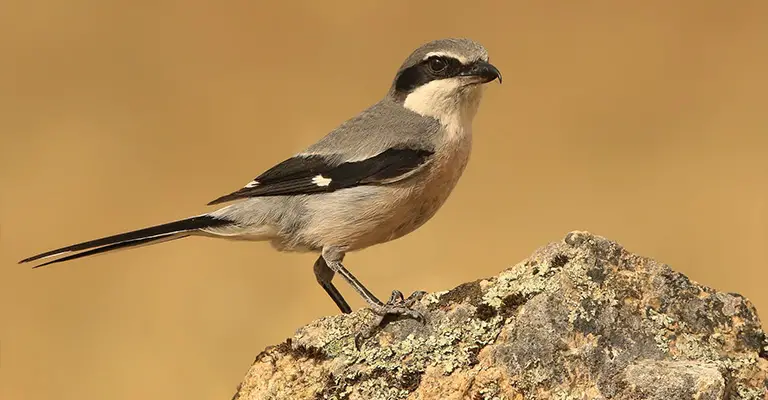
The Iberian grey shrike is a bird belonging to the shrike family. It appears quite similar to the great grey shrike species except for a few distinctive features.
It was once thought to be the same species as the latter but was later identified as a distinct one. Interestingly, these two species do not breed with each other and are separated by their different habitats.
The Iberian grey shrike is typically found in the Iberian Peninsula and certain parts of North Africa. Its diet primarily consists of insects and small vertebrates.
It is also known for its unique hunting behavior where it impales its prey on sharp objects such as thorns before consuming them later.
Overall, the Iberian grey shrike is a fascinating bird that has adapted to its environment and gained its place in the diverse family of shrikes.
Scientific classification:
| Kingdom | Animalia |
| Phylum | Chordata |
| Class | Aves |
| Order | Passeriformes |
| Family | Laniidae |
| Genus | Lanius |
| Species | L. meridionalis |
Also Featured In: Most Common Spain Birds,
19. Mediterranean Short-Toed Lark
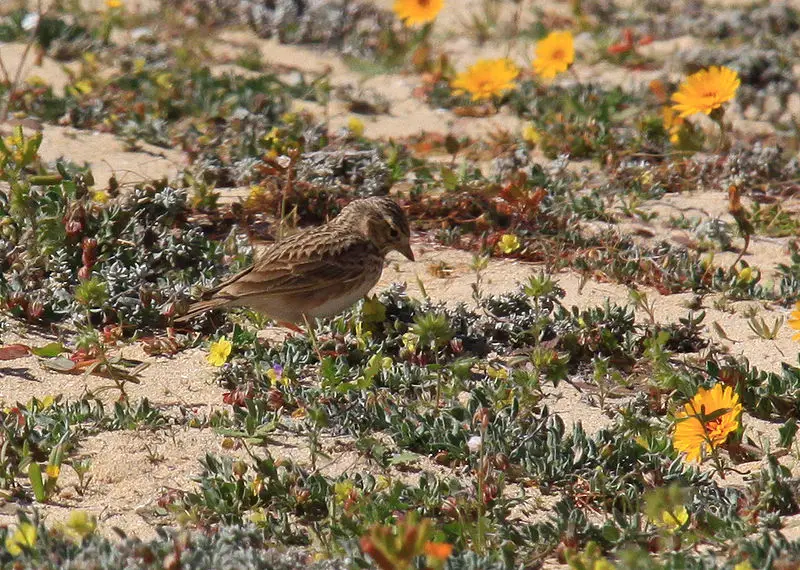
The tiny Mediterranean short-toed lark is a passerine bird native to the Mediterranean Basin. These birds are widespread, from the Canary Islands up to the Iberian Peninsula and spanning across North Africa to parts of the Middle East.
Their conservation status is of “least concern,” according to the International Union for Conservation of Nature.
Despite its small size, the Mediterranean short-toed lark is a common bird found in a variety of habitats, including steppe, desert, and agricultural fields.
They have brownish-grey feathers with streaks of black and white, and a small crest on their heads.
These little larks are known for their unique flight patterns, which include a jumpy and erratic flight with brief hovering.
Overall, the Mediterranean short-toed lark is a lively and common bird found throughout the Mediterranean Basin.
Scientific classification:
| Kingdom | Animalia |
| Phylum | Chordata |
| Class | Aves |
| Order | Passeriformes |
| Family | Alaudidae |
| Genus | Alaudala |
| Species | A. rufescens |
20. Canarian Houbara
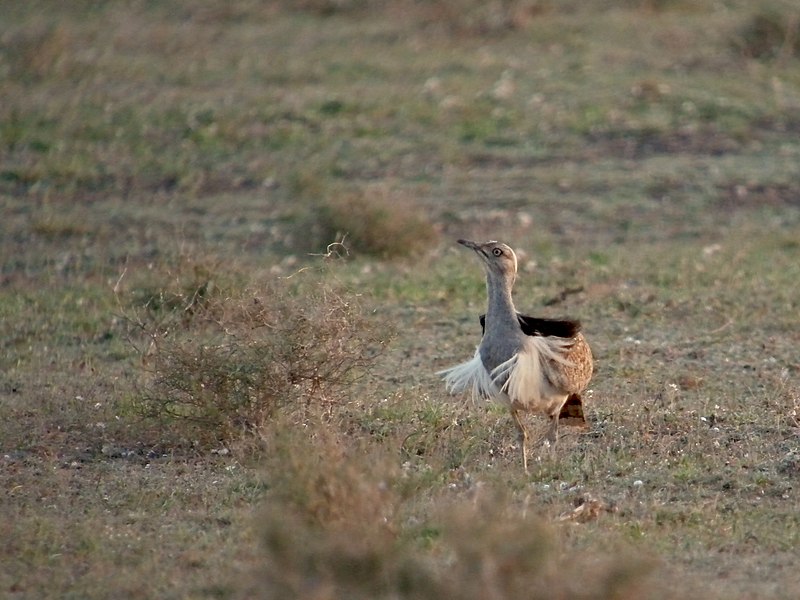
The Canarian houbara is a striking bird belonging to the bustard family, which is found exclusively on the eastern Canary archipelago. This subspecies is known to be scarce and threatened in its non-migratory resident status.
The bird’s impressive size and unique features make it a captivating symbol of the island of Fuerteventura.
Endemic to the Macaronesia region of the North Atlantic Ocean, the Canarian houbara is distinctly different from the other two subspecies of the houbara bustard.
Despite being a rare find, the Canarian houbara’s striking appearance and cultural significance make it an essential component of the ecological and aesthetic landscape of the Canary Islands.
Scientific classification:
| Kingdom | Animalia |
| Phylum | Chordata |
| Class | Aves |
| Order | Otidiformes |
| Family | Otididae |
| Genus | Chlamydotis |
| Species | C. undulata |
| Subspecies | C. u. fuertaventurae |
Conclusion
Lanzarote, a unique island in the Canary archipelago, is home to a diverse array of avian species, totaling 20 identified birds.
From the striking Houbara Bustard to the colorful Barbary Partridge, these feathered inhabitants contribute to the island’s ecological richness and cultural heritage.
As integral components of Lanzarote’s fragile ecosystems, these birds serve as indicators of environmental health and provide valuable ecosystem services, including seed dispersal and pest control.
To ensure the continued presence of these avian species, concerted conservation efforts are essential, focusing on habitat preservation, minimizing human disturbances, and promoting sustainable tourism practices.
By protecting Lanzarote’s avian biodiversity, we safeguard the island’s natural legacy for future generations to cherish and enjoy.